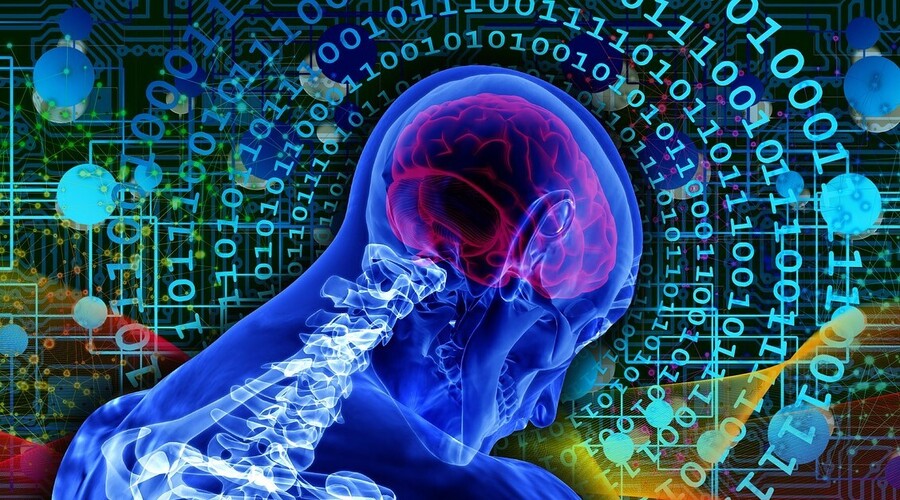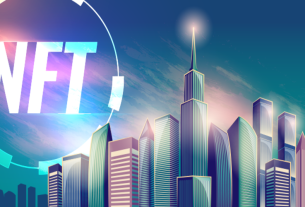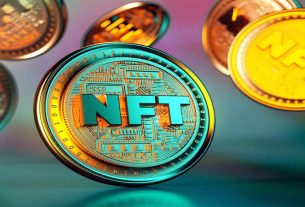Genealogy is the study of family history and lineage, and has been an important area of study for centuries. With the rise of digital technology, there is now the potential to create and store digital ancestry records using NFTs. In this article, we will explore the potential benefits and challenges of using NFTs for genealogy, and the future of digital ancestry records.
What are NFTs?
Before we dive into the potential of NFTs for genealogy, it’s important to understand what NFTs are. NFTs, or non-fungible tokens, are unique digital assets that are stored on a blockchain. Each NFT is one-of-a-kind and cannot be replicated or exchanged for something else.
Benefits of Using NFTs for Genealogy
1. Unique and Secure Ownership
NFTs are unique digital assets that are stored on a blockchain, meaning that each NFT is one-of-a-kind and cannot be replicated or exchanged for something else. This makes them an ideal tool for documenting and verifying ownership of family heirlooms, such as photos, documents, and artifacts. With NFTs, you can be sure that your family history is secure and will not be lost or stolen.
2. Easily Shareable and Accessible
NFTs can be easily shared and accessed by family members and researchers around the world. By creating an NFT of a family heirloom, you can make it accessible to anyone with an internet connection. This makes it easier to share and preserve family history, even if family members are located in different parts of the world.
3. Enhances Collaboration
Using NFTs for genealogy can also enhance collaboration among family members and researchers. By creating NFTs of family heirlooms, multiple family members can contribute to the documentation and preservation of family history. Additionally, researchers can use NFTs to collaborate on genealogical projects, sharing information and resources in a secure and transparent manner.
4. Increased Value of Family Heirlooms
By creating NFTs of family heirlooms, you can increase their value and significance. NFTs provide a new way to document and verify the authenticity of family artifacts, making them more valuable and interesting to collectors and researchers.
5. Preserves Family History for Future Generations
Perhaps the most significant benefit of using NFTs for genealogy is that it helps to preserve family history for future generations. By documenting family history in a secure and easily accessible manner, you can ensure that your family’s legacy will be remembered for years to come.
Challenges of Using NFTs for Genealogy

1. Technical Complexity
One of the main challenges of using NFTs for genealogy is the technical complexity involved in creating and managing them. Creating an NFT requires knowledge of blockchain technology and smart contracts, which can be difficult for those who are not familiar with these concepts. Additionally, managing and securing NFTs requires a certain level of technical expertise, which can be a barrier for some people.
2. Lack of Standardization
Another challenge of using NFTs for genealogy is the lack of standardization in the industry. Currently, there is no standard for creating and managing NFTs, which can lead to interoperability issues and make it difficult to share NFTs across different platforms and marketplaces.
3. Cost
Creating and managing NFTs can also be expensive. Transaction fees and gas fees for the blockchain can add up, especially if multiple NFTs are being created or transferred. This can be a barrier for those who want to use NFTs for genealogy but do not have the financial resources to do so.
4. Security Risks
NFTs are stored on a blockchain, which is a decentralized digital ledger. While this provides increased security compared to traditional data storage methods, there are still security risks associated with storing data on a blockchain. Hackers and cybercriminals can potentially access NFTs if they are not properly secured, which can compromise sensitive family information.
5. Adoption
Finally, the adoption of NFTs for genealogy is still in its early stages. While NFTs have gained popularity in the art and gaming industries, they are not yet widely adopted in genealogy. This can make it difficult to find resources and support for using NFTs for genealogy.
Future Applications of NFTs in Genealogy
As the use of NFTs continues to evolve, it is likely that we will see new and innovative applications in the field of genealogy. One potential application is the use of NFTs to create unique, verifiable family trees. By creating digital assets that represent each family member, it would be possible to create a visual representation of family history that can be easily shared and accessed.
Another potential application of NFTs in genealogy is the creation of digital time capsules. By creating a collection of digital assets that represent a specific period in time, families can create a snapshot of their history that can be passed down to future generations.
NFTs and Cultural Heritage
In addition to their potential applications in genealogy, NFTs also have the potential to transform the way we think about cultural heritage. With NFTs, it is possible to create unique, verifiable digital assets that represent cultural artifacts, such as art, music, and literature.
This could help to preserve and promote cultural heritage in a way that is accessible and secure, while also creating new revenue streams for artists and cultural institutions. NFTs could also be used to create virtual exhibitions and museums, allowing people from around the world to experience cultural heritage in new and innovative ways.
However, there are also challenges and limitations to using NFTs for cultural heritage. One challenge is the issue of ownership and intellectual property rights. It will be important to ensure that the rights of creators and cultural institutions are respected and protected when using NFTs to represent cultural heritage.
Another challenge is the issue of accessibility. While NFTs offer a new way to preserve and promote cultural heritage, it is important to ensure that everyone has access to the technology needed to create and view these assets. This could be a barrier for some communities, particularly those in developing countries or with limited access to technology.
NFTs and Environmental Sustainability
Another important issue to consider when using NFTs is their impact on the environment. The energy usage required to create and verify NFTs is significant, and there are concerns about the carbon footprint of blockchain technology.
One potential solution to this problem is the use of renewable energy sources to power blockchain networks. Some blockchain projects are already exploring this option, and it is likely that more will follow suit in the coming years.
Another solution is the development of more efficient blockchain technologies that require less energy to operate. This could help to reduce the carbon footprint of NFTs and other blockchain-based applications.
The Future of NFTs and Blockchain Technology
As the use of NFTs and blockchain technology continues to expand, it is likely that we will see new and innovative applications in a wide range of industries. From art and music to gaming and finance, NFTs have the potential to transform the way we think about ownership, value, and digital assets.
However, it is also important to address the challenges and limitations of the technology, such as environmental sustainability and accessibility. By addressing these challenges and working towards responsible regulation and innovation, we can ensure that NFTs and blockchain technology are used in a way that is ethical, sustainable, and beneficial to all.
NFTs and the Music Industry
The music industry is one area where NFTs are already being used to create unique, verifiable digital assets. With NFTs, it is possible for artists to create digital assets that represent specific songs, albums, or merchandise. These assets can be time-stamped on the blockchain, creating a verifiable record of ownership and authenticity.
NFTs also offer a new way for artists to monetize their work and connect with fans. By creating digital assets that represent exclusive access to concerts, meet-and-greets, or other experiences, artists can create new revenue streams and strengthen their relationship with their audience.
However, there are also challenges and limitations to using NFTs in the music industry. One challenge is the issue of accessibility. While NFTs offer a new way to monetize music and connect with fans, it is important to ensure that everyone has access to the technology needed to create and view these assets. This could be a barrier for some fans, particularly those in developing countries or with limited access to technology.
Another challenge is the issue of exclusivity. While NFTs offer a way for artists to create unique, verifiable digital assets, it is also possible for these assets to become exclusive and inaccessible to some fans. This could lead to a new form of inequality in the music industry, with some fans being left out of exclusive experiences and opportunities.
NFTs and the Art World
The art world is another area where NFTs are having a significant impact. With NFTs, it is possible to create digital assets that represent specific works of art, creating a verifiable record of ownership and authenticity.
NFTs also offer a new way for artists to monetize their work and connect with collectors. By creating digital assets that represent exclusive access to exhibitions, studio visits, or other experiences, artists can create new revenue streams and strengthen their relationship with collectors.
However, there are also challenges and limitations to using NFTs in the art world. One challenge is the issue of exclusivity. While NFTs offer a way for artists to create unique, verifiable digital assets, it is also possible for these assets to become exclusive and inaccessible to some collectors. This could lead to a new form of inequality in the art world, with some collectors being left out of exclusive experiences and opportunities.
Another challenge is the issue of authenticity. While NFTs offer a way to create a verifiable record of ownership and authenticity, there are concerns about the potential for fraud and counterfeiting. It will be important to develop robust systems and standards for verifying the authenticity of NFTs in the art world.
The Role of Education
As with any new technology, it will be important for individuals to have a basic understanding of NFTs and their potential applications in genealogy. This is particularly important for those who are interested in preserving their family history and lineage.
Education about NFTs could be incorporated into existing genealogy courses and programs, as well as offered as standalone courses. There are also numerous online resources and communities dedicated to discussing and sharing information about NFTs, which can be a valuable source of information and support for those interested in using NFTs for genealogy.
Addressing the Challenges of NFTs in Genealogy
In order to ensure that NFTs are used responsibly and ethically in the field of genealogy, it will be important to address the challenges and limitations of the technology. One challenge is the issue of privacy, as genealogy often involves sensitive personal information. It will be important to ensure that this information is stored securely and only accessible to those who have permission to access it.
Another challenge is the issue of accessibility. While NFTs offer a new way to store and share family history, it is important to ensure that everyone has access to the technology needed to create and view these assets. This could be a barrier for some families, particularly those in developing countries or with limited access to technology.
Conclusion
NFTs offer a new way to store and share family history, with the potential to create unique, verifiable digital assets that represent specific family members, documents, and photographs. While there are challenges and limitations that need to be addressed, the potential benefits of using NFTs for genealogy are significant.
As the technology continues to evolve, it is likely that we will see new and innovative applications of NFTs in the field of genealogy. With responsible regulation and continued innovation, NFTs have the potential to transform the way we think about family history and lineage for generations to come.
I’m a best-selling author and leading authority in the world of cryptocurrency. I have been involved in the crypto community since 2012 and have helped numerous startups and organizations on blockchain strategy. I am a regular contributor to Forbes and CoinDesk, and my work has been featured in The Wall Street Journal, Bloomberg, Reuters, and other major media outlets. In addition to writing for publications, I am also a sought-after speaker on cryptocurrency and blockchain technology niches respectively.




